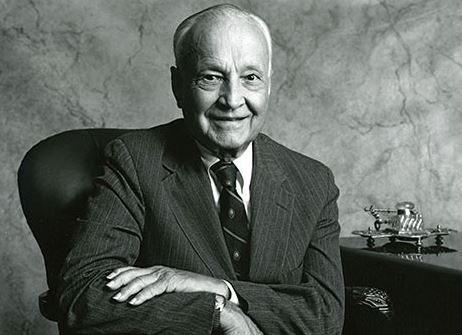How often do Singaporeans look into their CPF unless one is planning for housing or retirement? Over the years, the CPF has made many adjustments as the average lifespan increases. Furthermore, the government is still ramping up efforts to encourage population growth to tackle decreasing fertility rates. As such, it might be good to look into our CPF and setup some known hacks that will prove to be worthwhile in the long run.
In this article we discuss 5 important strategies that you should know to potentially enjoy higher returns.
Shielding Your Special Account
When you turn 55, your savings in the Special Account (SA) and Ordinary Account (OA) will be transferred to your newly created Retirement Account (RA). The amount transferred automatically is up to the Full Retirement Sum (FRS), which is $198,800 in 2023.
To shield your SA savings, leave behind $40,000, the minimum amount, and invest the rest temporarily in a short-term and relatively safe investment product under the CPF Investment Scheme. On your 55th birthday, $40,000 from your SA and savings from your OA – up to the FRS – will be transferred to your RA. You can then liquidate your temporary investment, and the amount invested plus gains (if any) will return to your SA.
Topping Up to Enhanced Retirement Sum (ERS)
Securing a comfortable retirement is a priority for many Singaporeans, and one way to enhance your monthly payouts is by topping up your Retirement Account (RA) to the Enhanced Retirement Sum (ERS). By doing so, you can enjoy increased benefits from the CPF LIFE scheme, which provides a lifelong income stream starting from age 65. In 2023, the ERS amount is set at $298,200.
Let’s imagine you are 55 years old in 2023 and have already accumulated savings in your RA. If you have already met or exceeded the ERS amount, you would receive a monthly CPF LIFE payout of $2,190 to $2,360 under the CPF LIFE Standard Plan upon reaching 65. However, by proactively topping up your RA with cash or CPF savings to reach the ERS, you have the potential to boost your monthly payout by up to $250.
What’s more, you can continue topping up your RA to the ERS in the subsequent years, further increasing your monthly payouts. Remember, when calculating the top-up amount, it is crucial to exclude the interest component. For instance, if you currently have $280,000 in your RA in 2022, you can contribute an additional $18,200 in 2023 to meet the prevailing ERS of $298,200.
Topping up to the ERS offers an excellent opportunity to enhance your CPF LIFE payouts and secure a more financially stable retirement. However, before embarking on this strategy, it is essential to assess your overall financial situation and ensure you have sufficient funds for your other needs. Consult with a financial advisor or reach out to the Central Provident Fund (CPF) Board for personalized guidance based on your specific circumstances.
By taking advantage of the ERS top-up option, you can pave the way for a brighter and more secure retirement, enjoying the benefits of higher monthly payouts through the CPF LIFE scheme.
Using the CPF Voluntary Contribution Scheme
Consider the CPF voluntary contribution (VC) scheme – the “VC-3A” scheme – to top up monies to your three CPF accounts (Ordinary, Special, and Medisave Accounts) subject to an annual limit known as the CPF Annual Limit. This way, you can enjoy the attractive CPF interest rates.
The maximum amount of voluntary contribution to the three CPF accounts that you can make this year is the difference between the CPF Annual Limit ($37,740 in 2023) and the amount of mandatory contribution received for the year.
By making voluntary contributions, you can enjoy the attractive CPF interest rates and potentially grow your savings faster. It’s important to note that any excess contribution above the CPF Annual Limit will be refunded without interest from your voluntary contribution payment.
You can use the CPF contribution allocation calculator on the CPF Board’s website to find out how much is allocated to each of the three CPF accounts. This will help you to optimize your contributions and make the most of the scheme.
Topping Up CPF Accounts of Your Spouse and Parents
You can do a CPF transfer to your spouse and/or parents’ CPF accounts, up to a cap, after setting aside the Basic Retirement Sum in your own CPF account.
This is a useful hack that can help you earn attractive CPF interest rates while potentially enjoying tax relief of up to $8,000. Only cash top-ups qualify for tax relief, and there is no tax relief for top-ups beyond the prevailing Full Retirement Sum (FRS) each year, with a personal income tax relief cap of $80,000.
The CPF transfer to your spouse and/or parents’ CPF accounts, up to a cap, can be done after you have set aside the Basic Retirement Sum (BRS) in your own CPF account. It is worth noting that conditions apply, and there are limits to how much you can transfer.
Your spouse and parents will benefit from the extra interest paid in their respective CPF accounts, and they will have their own source of retirement payouts. This hack can help you and your family members build a larger nest egg for retirement and provide financial security in the long term.
Maximizing Your Child's Child Development Account (CDA)

In Singapore, many parents are unaware of the Child Development Account (CDA). This special savings account, established by the government, is designed to support parents, single parents included, in saving for their child’s education and related expenses. By harnessing the full potential of the CDA, parents can save a substantial amount of money over time while nurturing their child’s future.
When you open a CDA, the government provides an incredible initial dollar-for-dollar matching of up to $3,000. Imagine depositing $3,000 into the account, only to witness the government matching it with another $3,000, giving you a grand total of $6,000. But the benefits don’t end there. The CDA offers an annual government top-up of up to $300 or $600, depending on your child’s age. This valuable government contribution continues until your child reaches 12 years old.
The funds accumulated in the CDA can be utilized for various educational expenses, including preschool fees, medical costs, and approved enrichment programs. It’s important to note that any unused funds in the CDA automatically transfer to your child’s Post-Secondary Education Account (PSEA) once they turn 13. The PSEA continues to grow with an attractive interest rate of 2.5% per annum.
As your child reaches 30 years old, the funds from their PSEA are then transferred to their CPF Ordinary Account (OA). The CPF OA presents an opportunity for their savings to flourish, as it offers an interest rate of up to 3.5% per annum. By maximizing your child’s CDA and leveraging the power of the PSEA, you’re providing them with a head start in building their CPF savings. These funds can be utilized to finance their education or even support the purchase of their first home in the future.
To maximize the benefits of the CDA, consider depositing the maximum allowable amount each year and utilizing the funds for eligible expenses. Remember, the government top-up is available until your child turns 12, so seize this opportunity before it expires. By doing so, you’ll be able to accumulate substantial savings over the years and secure a bright future for your child.
When you open a CDA, the government provides an initial dollar-for-dollar matching of up to $3,000. This means that if you deposit $3,000 into the account, the government will match it with another $3,000, giving you a total of $6,000. The CDA also offers a yearly government top-up of up to $300 or $600, depending on your child’s age. This government top-up is available until your child turns 12.
The funds in the CDA can be used to pay for expenses related to your child’s education, including preschool fees, medical expenses, and certain enrichment programs. Unused funds in the CDA will be automatically transferred to your child’s Post-Secondary Education Account (PSEA) when he or she turns 13. The PSEA also earns interest at a rate of 2.5% per annum.
At age 30, the funds in your child’s PSEA will be transferred to their CPF Ordinary Account (OA), which earns an interest rate of up to 3.5% per annum. By maximizing your child’s CDA and PSEA, you are effectively giving them a head start in growing their CPF savings, which can be used to finance their education or the purchase of their first home.
To maximize the use of the CDA, consider depositing the maximum amount possible each year, and using the funds in the account to pay for eligible expenses. Also, keep in mind that the government top-up is available until your child turns 12, so be sure to make use of this benefit before it expires. By doing so, you can potentially save a significant amount of money over the years and help secure your child’s future.
Find out more
If you want to know more about maximizing your CPF such as knowing
‘how much you can invest using your CPF’,
‘what insturments can be invested under CPFIS?’
‘how much do u need to have to retire comfortably’,
you can join our Autopilot webinar that we run every bi-monthly.
To keep a lookout, subscribe to our newsletter below to get the latest news, updates, and expert tips on how to grow your portfolio.
Fill in your details at “Get Your ETF Investing Ebook Free” to subscribe.
Disclaimer
The above article is for educational purposes only. Under no circumstances does any information provided in the article represent a recommendation to buy, sell or hold any stocks/asset. In no event shall ViA or any Author be liable to any viewers, guests or third party for any damages of any kind arising out of the use of any content shared here including, without limitation, use of such content outside of its intended purpose of investor education, and any investment losses, lost profits, lost opportunity, special, incidental, indirect, consequential or punitive damages resulting from such unintended use.










